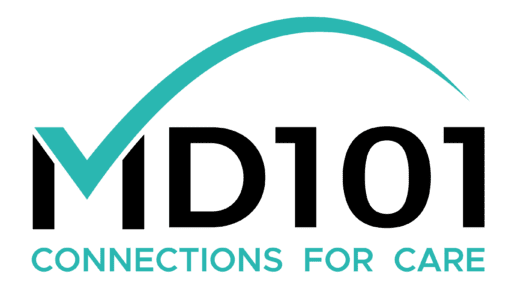Friday, 4 October 2013
By Mitch on Friday, 4 October 2013, 13:24 - Templates
Risk matrixes are a useful way to show graphically the ranges in which risks are acceptable, tolerable and unacceptable. Here is an excel sheet that automates the computation of ranges.
Continue reading...
Friday, 27 September 2013
By Mitch on Friday, 27 September 2013, 10:36 - Misc
Apple now asking app developers to provide sources of medical information
says imedicalapps.com web site.
Continue reading...
Wednesday, 25 September 2013
By Mitch on Wednesday, 25 September 2013, 17:28 - Regulations
After two years of gestation, FDA issues final Guidance on Mobile Medical Apps!
Continue reading...
Friday, 20 September 2013
By Mitch on Friday, 20 September 2013, 13:23 - Templates
Here is an update of Risk Management Plan and Risk Analysis Report templates.
Continue reading...
Wednesday, 18 September 2013
By Mitch on Wednesday, 18 September 2013, 13:57 - Misc
Here is a record of an interview on BBC News radio.
Continue reading...
Friday, 13 September 2013
By Mitch on Friday, 13 September 2013, 13:22 - Templates
Here is an update of Software Test Plan, Software Test Description, and Software Test Report templates.
Continue reading...
Tuesday, 10 September 2013
By Mitch on Tuesday, 10 September 2013, 13:28 - Misc
Last week in stumbled upon a video made by Paul Sonnier, head of the Digital Health Group on Linkedin.
Continue reading...
Friday, 6 September 2013
By Mitch on Friday, 6 September 2013, 13:21 - Templates
Here is an update of System Architecture Description template and Software Detailed Design template.
Continue reading...
Friday, 30 August 2013
By Mitch on Friday, 30 August 2013, 13:45 - Templates
Here is an update of Software Requirements Specifications template.
Continue reading...
Friday, 16 August 2013
By Mitch on Friday, 16 August 2013, 13:46 - Misc
Summer break.
See you at the end of the month with new templates and new articles about hot subjects like mobile apps or software risks management.
Continue reading...
Friday, 9 August 2013
By Mitch on Friday, 9 August 2013, 14:25 - Regulations
FDA recognizes 25 standards about risk management, interoperability and cybersecurity.
More on AAMI news website and the link to the Federal Register notice of Aug 6, 2013.
Friday, 2 August 2013
By Mitch on Friday, 2 August 2013, 11:12 - Regulations
To continue the topic about FDA draft guidances related to software and information systems, the FDA put in its top list the release of the Guidance of Mobile Medical Apps.
Guidance of Mobile Medical Apps is in the "A-list" of FDA and should be released by the end of 2013.
In hot topics, we have also a warning letter sent by the FDA to Biosense Technologies. The mobile App named uChek Urine Analyzer and developed by Biosense Technologies, falls into the category of medical devices, says FDA. Biosense claims on its website that the App turns the smartphone into a medical lab.
With such claim, it's not surprising that the FDA wants Biosense to submit a 510k!
Saturday, 27 July 2013
By Mitch on Saturday, 27 July 2013, 09:58 - Regulations
At be beginning of june 2013, the International Medical Devices Regulators Forum (IMDRF) published a proposed document on standalone software definitions.
The goal of this document is to harmonize the key definitions related to standalone software.
Continue reading...
Friday, 19 July 2013
By Mitch on Friday, 19 July 2013, 13:50 - Regulations
Continue reading...
Friday, 12 July 2013
By Mitch on Friday, 12 July 2013, 14:33 - Regulations
Unique Device Identification (UDI) had been in the pipes of regulators for a few years, beginning with the US in 2007, and following (as usual) by the European Union a few years later in 2012.
In parallel, the International Medical Device Regulators Forum (IMDRF) issued in 2011 a guidance on UDI, with the honorable objective of harmonizing UDI's all over the world.
What is the impact of these regulations and guidances on medical device software?
Continue reading...
Friday, 5 July 2013
By Mitch on Friday, 5 July 2013, 14:00 - Standards
Friday, 28 June 2013
By Mitch on Friday, 28 June 2013, 14:28 - Standards
This is today the last article of this series about SOUP.
SOUP is a concept that we find elsewhere than in the IEC 62304 standard. Namely in the FDA guidances.
Continue reading...
Friday, 21 June 2013
By Mitch on Friday, 21 June 2013, 13:02 - Regulations
Interrupting our series about IEC 62304 SOUP, we have breaking news from the FDA!
The FDA published this month a new Draft Guidance about Cyber Security and released a Safety Communication about Cybersecurity for Medical Devices and HospitalNetworks .
The federal agency recommends that manufacturers review their cybersecurity practices and policies to assure that appropriate safeguards are in place to prevent unauthorized access or modification to their medical devices. In other words, hacking treats, network intrusions, and the like, have to be addresses in the software risk assessment report.
Bouncing back to our series about SOUP, such risks shall be assessed when a SOUP is integrated in your software.
Friday, 14 June 2013
By Mitch on Friday, 14 June 2013, 13:43 - Standards
After having discussed about open-source software in the last post, we continue today this series about SOUP with the case of standalone software.
Continue reading...
Friday, 7 June 2013
By Mitch on Friday, 7 June 2013, 13:52 - Standards
After having discussed about frameworks and runtimes in the last article, we continue today this series about SOUP with the case of open-source software.
Continue reading...
